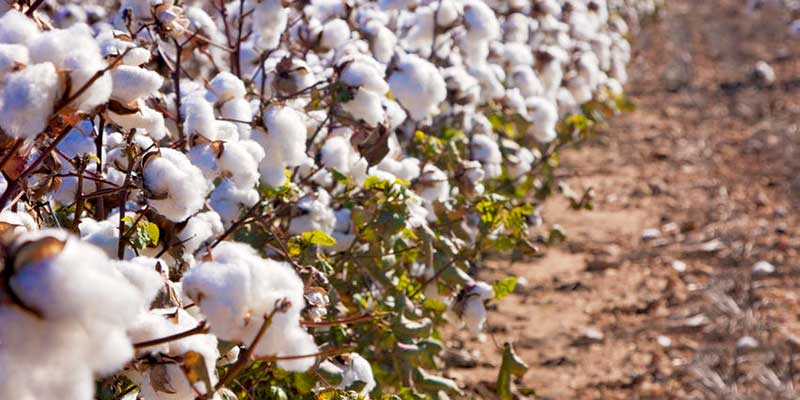Textile Industry Water Use and Treatment
Published on by Water Network Research, Official research team of The Water Network in Case Studies

Cotton is a thirsty crop, but the large amount of water needed to grow fibers is often neglected during the calculation of textile processing’s water footprint.
As the industry turns toward sustainability, decentralized water reuse has potential to reduce ‘virtual water’ toll
The textile industry is water-intensive throughout its many processes: sizing, desizing, mercerizing, scouring, bleaching, printing, and finishing. Beyond processing, water footprint calculations often neglect the use of significant amounts of “virtual water,” or water that can’t be used for anything else due to evaporation or contamination.
But the volume of water used is only one part of the industry’s environmental impact. Textile production wastewater also can contain a broad range of pollutants that harm external water resources. The type and quantity of pollutants generated depend on a wide range of variables, including the type of facility, as well as the technologies, processes, fibers, and chemicals used. For instance, processing cotton and wool fabrics requires more water than processing others such as nylon and polyester.
Typically, the pollutants found in textile wastewater include:
- Concentrations of nonbiodegradable organics or inorganics like metals, dyes, phenols, pesticides, phosphates, and surfactants
- Elevated concentrations of total suspended solids (TSS)
- High biological oxygen demand (BOD)
- High chemical oxygen demand (COD)
- High levels of total dissolved solids (TDS).
Dyes are considered to be among the most damaging pollutants.
Textile effluent can drastically deplete oxygen in water bodies by blocking light, thus encouraging septic conditions that can cause human illness and fish kills. High TDS levels may increase salinity and alter the pH balance of surface water bodies, and dyes that find their way into recreational waters can be aesthetically objectionable. Other dyeing chemicals like phenol may cause unpleasant smell and taste.
As mentioned, virtual water, the total water used in all phases of production, must be considered when calculating a water footprint. In textile processing, virtual water either evaporates or becomes too polluted for human use. In India, for instance, producing a kilo of cotton requires an average of 22,500 L (about 6,000 gallons) of water, but these large water requirements for producing fibers are often neglected during the calculation of textile processing’s water footprint.
A Move Toward Water Sustainability
The textile industry is making significant moves toward sustainability as it faces growing water costs, as well as regulatory pressures, demand from other industries, and populations.
Treatment of the great volumes of wastewater created by textile manufacturing requires significant amounts of treatment chemicals, high operating expenses and surcharges, sludge disposal expenses, and power requirements.
A recent major push for sustainability is a collaboration between the Vietnam Textile and Apparel Association (VITAS) and the Word Wildlife Fund (WWF) to make Vietnam’s bourgeoning textile and apparel industry more sustainable by 2020, with a focus on Mekong and Dong Nai delta apparel factories. The project will include improved river basin water quality management to foster social, economic, and conservation benefits. The VITAS/WWF initiative comes on the heels of a similar HSBC Bank funded program in China, Bangladesh, India, and Vietnam.
Decentralized Treatment for Textile Wastewater
Efficient biological and chemical treatments to process textile wastewater are available, but the agents used in chemical treatment tend to be expensive and environmentally damaging themselves. However, some microbes used in biological treatment work together to safely degrade complex organic wastes and other compounds, while at the same time reducing COD, BOD, and nitrogen.
In the case of the textile industry, a decentralized mode of wastewater treatment makes sense because it brings treatment to the point of manufacture. Also, treating textile effluent at the source, before it has been diluted in sewers, significantly improves efficiency. In areas where municipal facilities impose surcharges for highly polluted water, these charges can be reduced.
Fluence’s Smart Packaged Aspiral™ wastewater treatment plants are suited for this kind of decentralized treatment. Aspiral packages biological treatment in a shipping container for quick deployment and scalability, using a membrane aerated biofilm reactor (MABR).
At the heart of the Aspiral process is a spirally wound membrane that uses passive aeration at near-atmospheric pressure. This slashes the energy use of aeration by as much as 90%, for dramatic savings. And because simultaneous nitrification-denitrification takes place on the surface of the membrane, the process takes place in one tank, optimizing treatment capacity.
Aspiral produces a high-quality product suitable for use in agricultural irrigation or for other processes. This water recycling has the potential to greatly reduce the virtual water used in the industry.
Sustainable water use and management are now recognized as bottom-line essentials for the textile processing industry not just in terms of efficiency but in terms of maintaining public health and, consequently, public support.
Taxonomy
- Textile
- Cotton
- Fibers & Textiles
- Environmental
- Textile